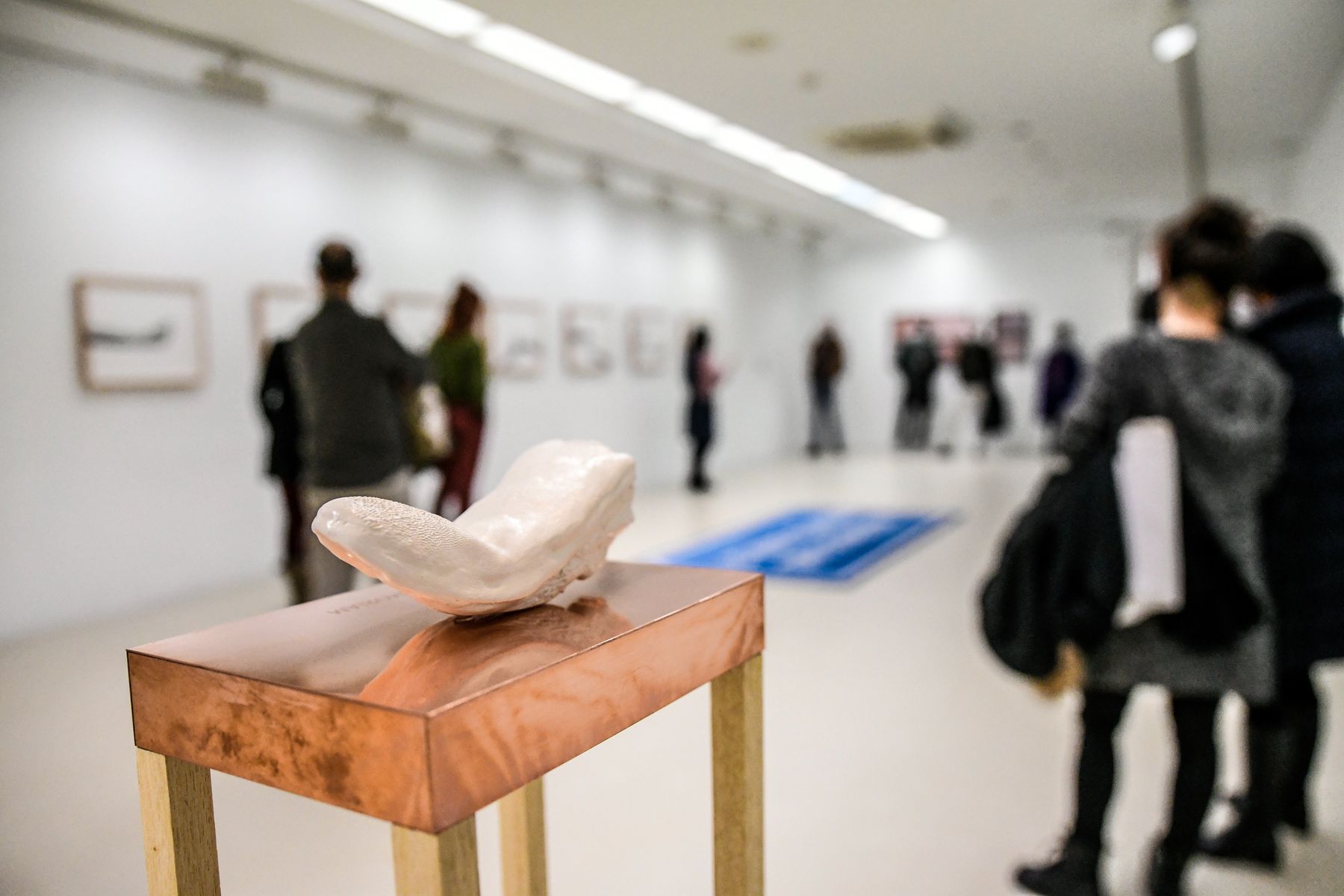
- The water poured into the rivers makes the water large in the sea. The Cantabrian slope is fed through multiple flows; Deba, Oria, Bidasoa, Lea, Oka… They have wanted to represent the Basque country as the salt water of the open sea, and three streams that satisfy the wide and varied sea that the Basque country is will be our main flows of water.

Under the title Hiruerreketa, the Basque house Oihaneder of Vitoria-Gasteiz has organized an exhibition entitled 'The artistic waters of the Basque Country'. Zaloa Ipiña, Alfredo Hernandez Zirika and Bigara are our current Urola, Artibai and Errobi, through which we will talk about contemporary art made in Euskera and which talks about the Basque.
The works of natural origin have collected the white walls of the Oihaneder house from letters. The instruments of the Vitorian artist Zirika are the letters created with the pallets used in the transportation of goods. It uses recycled words in works of art and tells stories and reflections through alphabet games.
It presents dozens of games between the wooden letters, for which it uses different wood elaborations: holes, ropes, cuttings… Zirika offers us the possibility of seeing, consuming and tasting the Basque Country in another way, sharing and contaminating its love for the Basque Country.
Next to the vitorian, Bigara ba, the beast of the illustrated palindromes. On this occasion the letters are black and are accompanied by colorful and minimalist illustrations of animals. After the name of each animal, the Gipuzkoan couple shows us another word: zombie orro costume, ele bele, airez azeria, etc.
Palindromes written are accompanied by anagrams, sayings, songs and illustrations. At this meeting point of texts, words and letters we will find beasts that do not want to be domesticated and a round mirror at the center of the exhibition. In fact, palindromes are that, the wrong texts that you can see through the mirror.
The last river of language we represent as the sea is called Zaloa Ipiña. After the collection of Gorreri bisuala, the artwork of the Biscayan, there is a thorough investigation of the incapacities, limitations and persecutions of a language. In history, Ipiña recalls the oppression suffered by the Basque Country, and in its part we can find photographs of the rings and coins used for grief in schools.
Placed on a table in a circle, with hand-crafted white tabs, the names of the world’s languages that have died since the year 2000 are shown. Playing with them we will reach the end of the exhibition, where we will find the game between long and red tabs hanging from the ceiling, and as we approach, a voice of witches will tell us a mysterious legend.
Photos of Eider Iturriaga:



